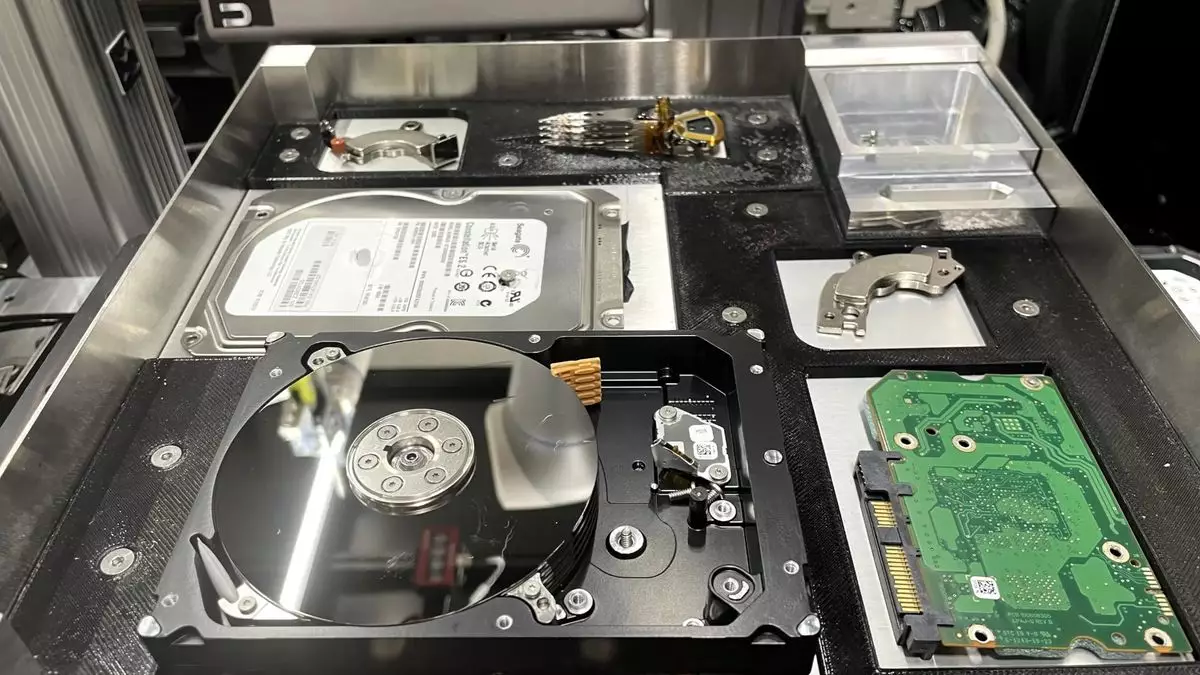As the digital age progresses, the amount of electronic waste generated globally continues to escalate alarmingly. It is estimated that data centers generate an astonishing 50 million metric tons of e-waste each year, with defunct hard drives responsible for a significant portion of this increasing burden. Traditionally, the standard practice for disposing of hard drives has involved destructive methods such as shredding, primarily aimed at protecting sensitive information. However, this age-old method not only results in environmental degradation but also fails to capitalize on the valuable materials contained in these devices.
Microsoft’s Innovative Solution
Microsoft is stepping into the ring with a transformative proposition: employ robotics to meticulously disassemble hard drives and recycle the materials effectively. This initiative addresses two critical issues—reducing e-waste and promoting sustainability. Recognizing that traditional disposal methods are inadequate, particularly given the sheer volume of hard drives being discarded—estimated between 20 to 70 million annually—lead principal data scientist Ranganathan Srikanth initiated a project during the 2022 Microsoft Global Hackathon. His ambitious goal is to achieve a 90% reuse and recycling rate of hard drives by the year 2025.
The complexity of this task lies in the sheer number of drives that are phased out and the intricacies involved in disassembling a hard drive. While humans can manage this task in small numbers, scaling it up to handle millions requires automation. By harnessing robotic systems and machine learning, Microsoft has begun to develop a prototype that can perform the repetitive and intricate actions of separating drive components effectively. The innovative process ensures that nearly all parts, particularly the coveted neodymium magnets, are retrieved for recycling, with the only components slated for shredding being the platters themselves.
Challenges in Implementation
While the proposal is ambitious and environmentally beneficial, there are inherent challenges. Identifying and categorizing screws and components of varying shapes and sizes using AI requires extensive training and calibration. The nuances of distinguishing between similar-looking parts can significantly hinder progress. Despite these hurdles, the prototype showcased by Microsoft demonstrates potential progress in e-waste recycling, though it remains a work in progress.
The innovative techniques being devised for hard drive recycling could pave the way for more comprehensive solutions in the future. If successful, these robotic systems could eventually evolve to handle more complex electronic items, including laptops and desktop computers. Unlike hard drives, these devices are significantly more complicated to disassemble, presenting unique challenges for component identification and recovery. Nevertheless, the rich wealth of materials contained in these products makes them equally important targets for recycling efforts.
While some view artificial intelligence (AI) as a trend whose time has come and gone, its application in this context is undeniably promising. By automating the disassembly process and improving the accuracy of component identification, AI presents an opportunity to revolutionize e-waste management on a grand scale. The use of robots in this field not only serves to tackle the pressing issue of e-waste but also aligns with the increasingly urgent calls for corporate responsibility in environmental impact.
The methods employed by Microsoft in addressing the challenges of hard drive disposal reflect a burgeoning shift towards sustainable practices by leveraging technology in innovative ways. As we continue to generate more electronic waste than ever before, solutions like these may represent a vital strategy in combating the environmental crisis associated with e-waste. The union of robotics, machine learning, and responsible recycling holds the promise of a cleaner, greener world, where the materials we discard are given a second life, ultimately contributing to a more sustainable future.


Leave a Reply